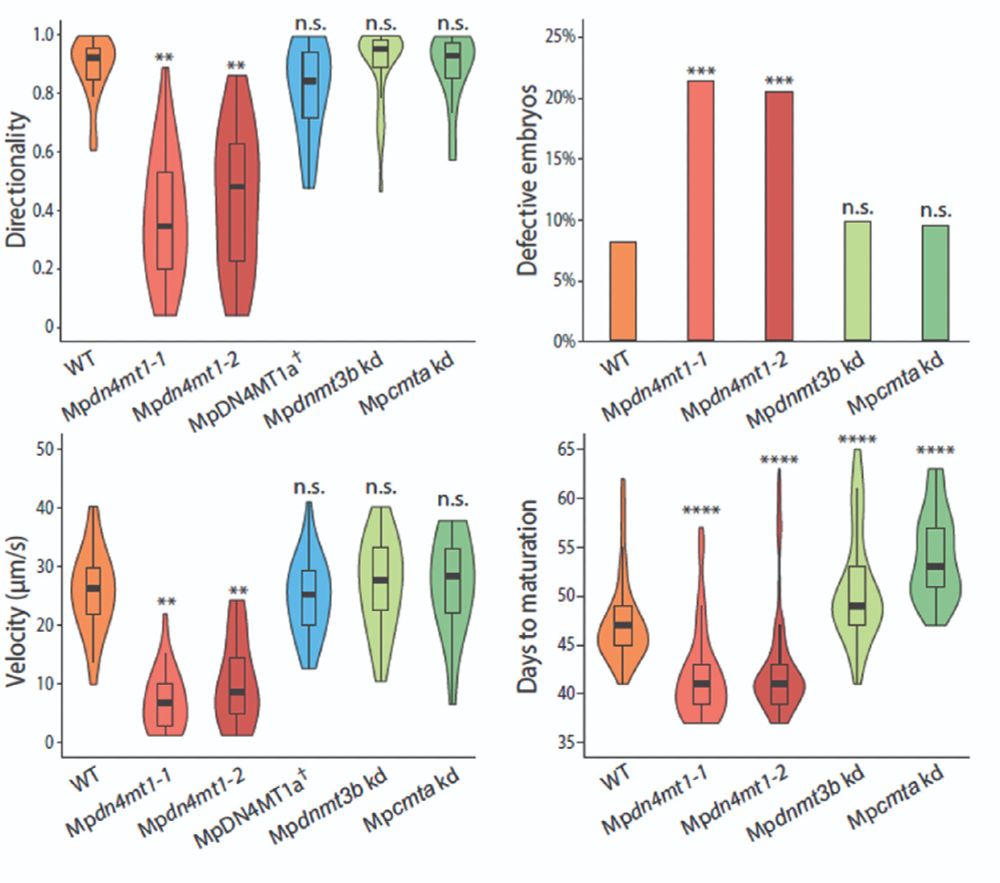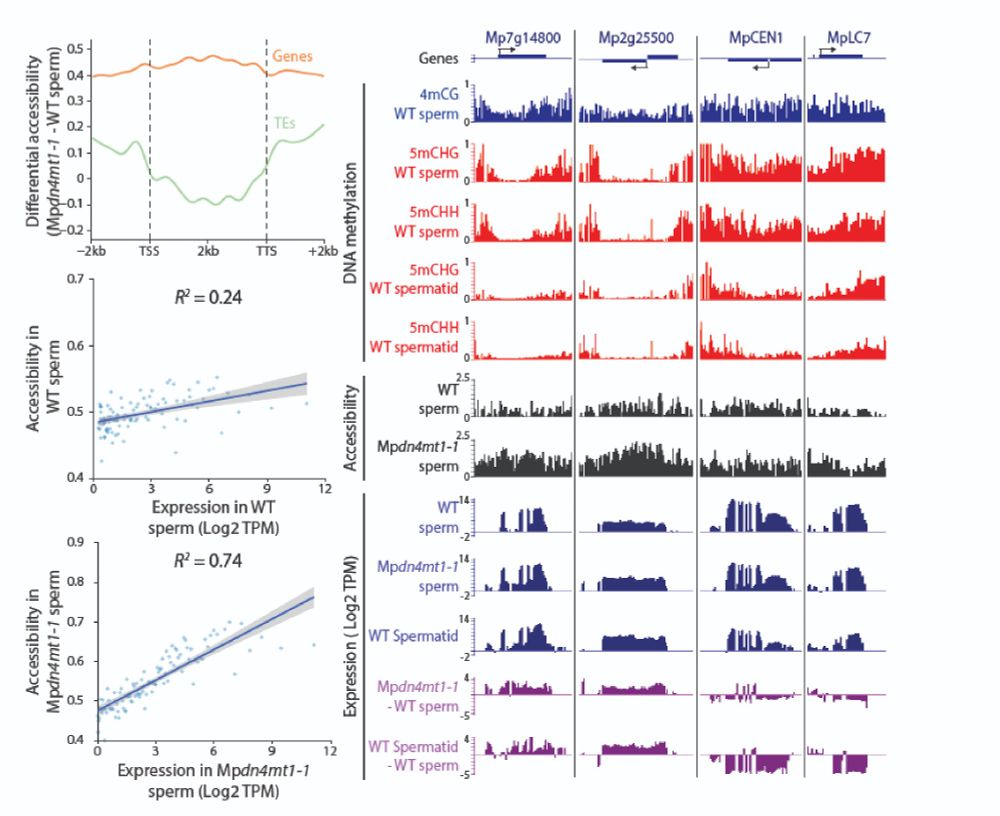We see no evidence of dual-modified 4,5mC, suggesting that 5mC blocks 4mC. This creates a clear division: 4mC marks genes, 5mC marks repeats.
This allows global methylation for compaction while preserving the TE-specific 5mC signature.
10/13

We see no evidence of dual-modified 4,5mC, suggesting that 5mC blocks 4mC. This creates a clear division: 4mC marks genes, 5mC marks repeats.
This allows global methylation for compaction while preserving the TE-specific 5mC signature.
10/13
By contrast, sperm from global 5mC mutants show none of these distinctive phenotypes.
9/13

By contrast, sperm from global 5mC mutants show none of these distinctive phenotypes.
9/13
7/13

7/13
4/13

4/13
Loss of MpDN4MT1a abolishes 4mC, and reintroduction of wild-type—but not the catalytic mutant—restores it.
3/13

Loss of MpDN4MT1a abolishes 4mC, and reintroduction of wild-type—but not the catalytic mutant—restores it.
3/13
🧪 immunodot blot
🧪 LC-MS
🧬 Bisulfite-seq
🧬 SMRT-seq
🧬 4mC-TAB-seq
🧬 4mC-AMD-seq
2/13

🧪 immunodot blot
🧪 LC-MS
🧬 Bisulfite-seq
🧬 SMRT-seq
🧬 4mC-TAB-seq
🧬 4mC-AMD-seq
2/13

